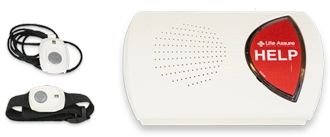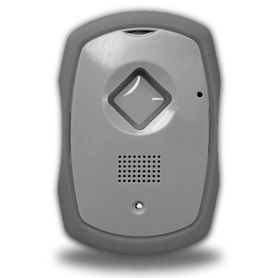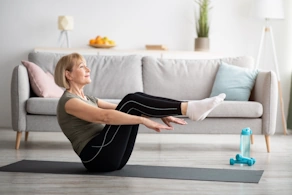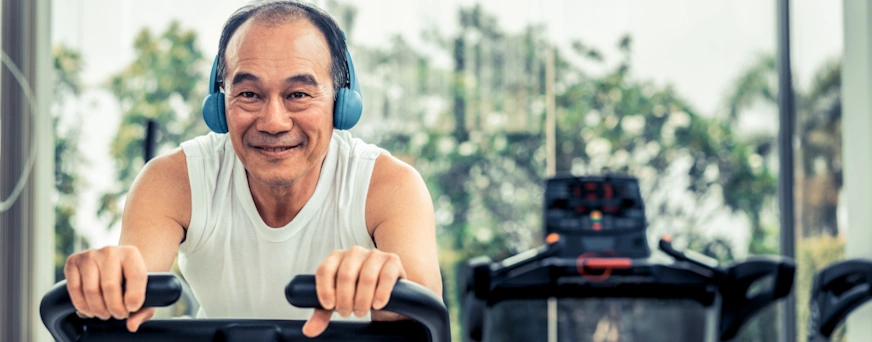Resistance Band Exercises For Seniors: Build Strength And Flexibility Safely
Staying strong and flexible is crucial for seniors aiming to maintain an active lifestyle. Resistance bands offer Canadian seniors a safe and effective way to exercise without the strain of high-impact workouts. Learn how resistance band exercises for seniors can build strength and improve flexibility, promoting a stronger, more flexible you.
Life Assure Product Quiz
Find The Perfect Medical Alert Device
Take our 30 second quiz and discover which Life Assure medical alert device is the right fit for you or a loved one.
Life Assure Product Quiz
Find The Perfect Medical Alert Device
Take our 30 second quiz and discover which Life Assure medical alert device is the right fit for you or a loved one.
Benefits Of Resistance Band Exercises For Seniors

Resistance bands are fantastic tools for seniors who want to stay active without overstraining their bodies. Their low impact makes them gentle on joints, reducing the risk of injury compared to heavier weights or high-impact activities. This is particularly beneficial for seniors concerned about joint health or mobility issues.
These bands are incredibly versatile, allowing for various exercises that target different muscle groups, including the legs, arms, core, and back. This flexibility means seniors can customize their workouts to match their fitness levels and goals, whether focusing on building strength, increasing flexibility, or improving balance.
Cost is another advantage. Resistance bands are an affordable alternative to pricey gym memberships or home equipment. They're lightweight and portable, making it easy for seniors to exercise at home or on the go.
For seniors, the regular use of resistance bands can lead to stronger muscles and greater flexibility, which help maintain independence and prevent falls. These exercises support better posture, balance, and coordination, contributing to a more active and enjoyable lifestyle.
Choosing The Right Resistance Bands
Finding the right resistance bands can make all the difference in your workout routine. Choose bands that match your fitness level and goals. Start by considering the band's thickness. Thicker bands offer more resistance, which is great if you want to challenge yourself. Thinner bands might be more suitable if you're just starting or recovering from an injury.
The length of the band also matters. Longer bands are versatile and can accommodate various exercises, especially those that need more stretch, like leg or chest presses. Shorter bands work well for targeting smaller muscle groups.
Material is another factor to consider. Most bands are made from latex, which is known for its durability and elasticity. However, if you have a latex allergy, there are non-latex options that provide similar benefits without the risk.
Ultimately, the best choice is a comfortable band that suits your exercise needs. Having a selection of bands with different resistance levels can help you adapt your workouts as you progress. Consulting with a fitness professional can offer personalized advice to ensure your safety and effectiveness in your exercise routine.
Safety Tips For Using Resistance Bands

Safety should always come first when using resistance bands. Here are some tips to keep in mind:
- ● Check Your Bands: Before each session, inspect your bands for damage, such as cracks or frays. A damaged band can break and cause injury.
- ● Focus On Form: Proper form is key to getting the most out of your exercises and avoiding injury. If unsure, a session with a physical therapist or fitness instructor can be invaluable.
- ● Ease Into It: Start with exercises that match your current fitness level. As you gain strength and confidence, you can gradually increase the resistance.
- ● Warm-Up And Cool-Down: Begin with a warm-up to get your muscles ready and finish with a cool-down to help your body recover.
- ● Don't Overstretch: Avoid stretching the bands beyond their limits to prevent snapping. Stick to the recommended stretch for each band.
Recommended Resistance Band Exercises For Seniors
Adding variety to your routine can help target different muscles and boost your fitness. Here are some exercises to try:
Seated Row
Seated rows primarily target the back muscles while engaging the biceps and core. For seniors, this exercise improves posture, enhances upper body strength for daily tasks, and supports spinal health, reducing the risk of back pain and injuries.
- 1. Sit on a chair, feet flat.
- 2. Place the band under your feet and hold the ends.
- 3. Keep your back straight, pull the bands to your waist, and squeeze your shoulder blades.
- 4. Return and repeat.
Leg Press
Leg strength is crucial for seniors as it supports mobility, allowing them to walk, climb stairs, and perform daily activities independently. Strong legs also enhance balance and stability, reducing the risk of falls and injuries that impact their quality of life. The leg press can boost leg strength.
- 1. Sit on the floor, legs extended, band around your feet.
- 2. Hold the band ends.
- 3. Push your feet away, extending your legs.
- 4. Return slowly and repeat.
Chest Press
The chest press strengthens the chest, shoulders, and arms, helping seniors maintain upper body strength for daily activities like lifting and pushing. It also promotes better posture by engaging core muscles and preventing the rounding of the shoulders, which can improve stability and confidence.
- 1. Sit or stand with the band behind your back, holding the ends.
- 2. Push forward until arms are extended.
- 3. Return and repeat.
Seated Bicep Curl
Seated bicep curls help seniors maintain arm strength, improving their ability to perform daily tasks like lifting groceries, carrying objects, and opening jars. Strengthening the biceps also enhances upper body function and reduces the risk of muscle weakness over time.
- 1. Sit on a chair, band under your feet.
- 2. Hold the ends, palms up.
- 3. Curl your hands to your shoulders, elbows close.
- 4. Lower and repeat.
Standing Hip Abduction
Standing hip abduction strengthens the hip muscles, improving mobility and making walking, stepping sideways, and getting out of chairs easier for seniors. It also enhances balance and stability, reducing the risk of falls and supporting lower body strength.
- 1. Stand feet hip-width apart, band around ankles.
- 2. Shift weight to one leg and lift the other to the side.
- 3. Return and repeat on the other side.
Creating A Balanced Workout Routine
Combine resistance band exercises with a well-rounded fitness routine for optimal results. Aim to include:
- ● Strength Training: Use resistance bands to target all major muscle groups at least twice weekly to improve strength and endurance.
- ● Flexibility Exercises: Incorporate stretching or yoga to enhance mobility, reduce stiffness, and maintain a full range of motion.
- ● Cardio Workouts: Engage in activities like walking, cycling, or swimming to support heart health and overall stamina.
Tailor your routine to match your fitness level and goals, ensuring a balance between exercise, rest, and recovery for sustained progress and injury prevention.
Additional Tips For Success
Setting realistic goals and tracking your progress can boost motivation and keep you on track. Keeping a journal to record exercises, resistance levels, and improvements helps you stay consistent and see your growth over time. Before starting a new routine, especially if you have health concerns, consult a healthcare provider to ensure a safe and effective approach.
Conclusion
Resistance band exercises are a safe, effective way for seniors to enhance strength and flexibility. Incorporate these exercises into your routine to enjoy better health, increased independence, and a more active lifestyle. Embrace the benefits and step towards a healthier you.











 Get Help With The Push Of A Button
Get Help With The Push Of A Button















